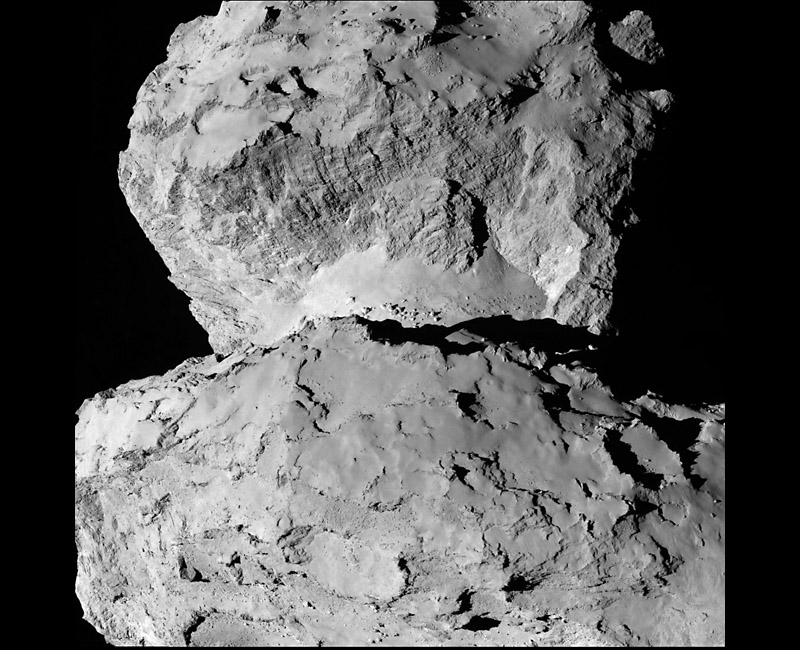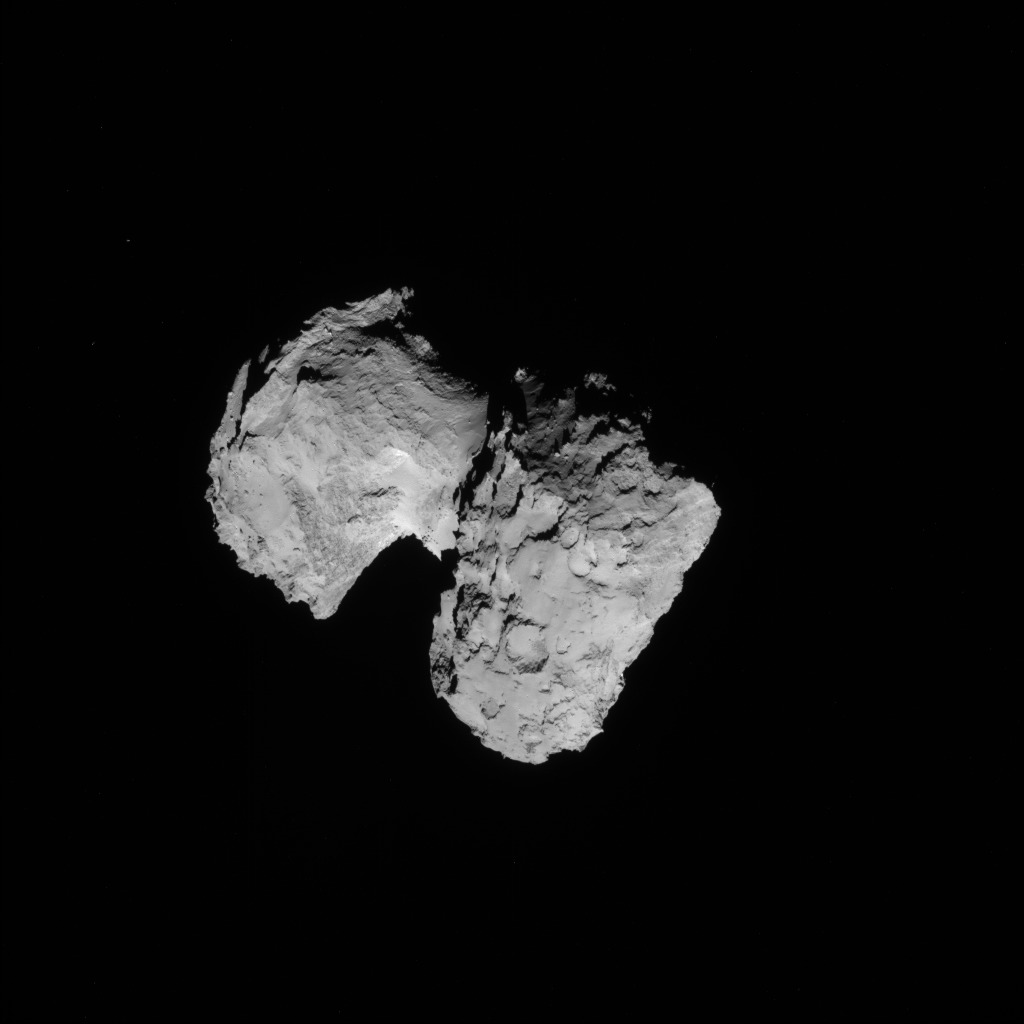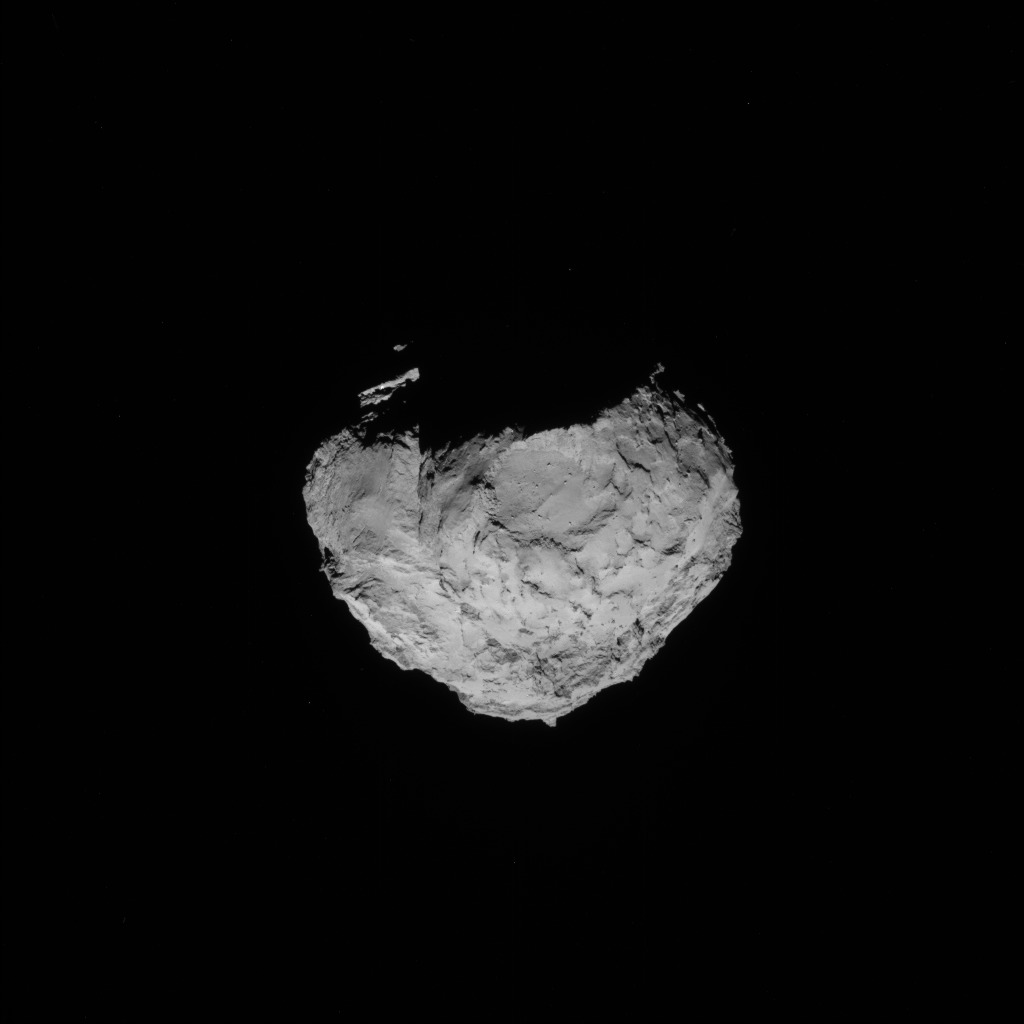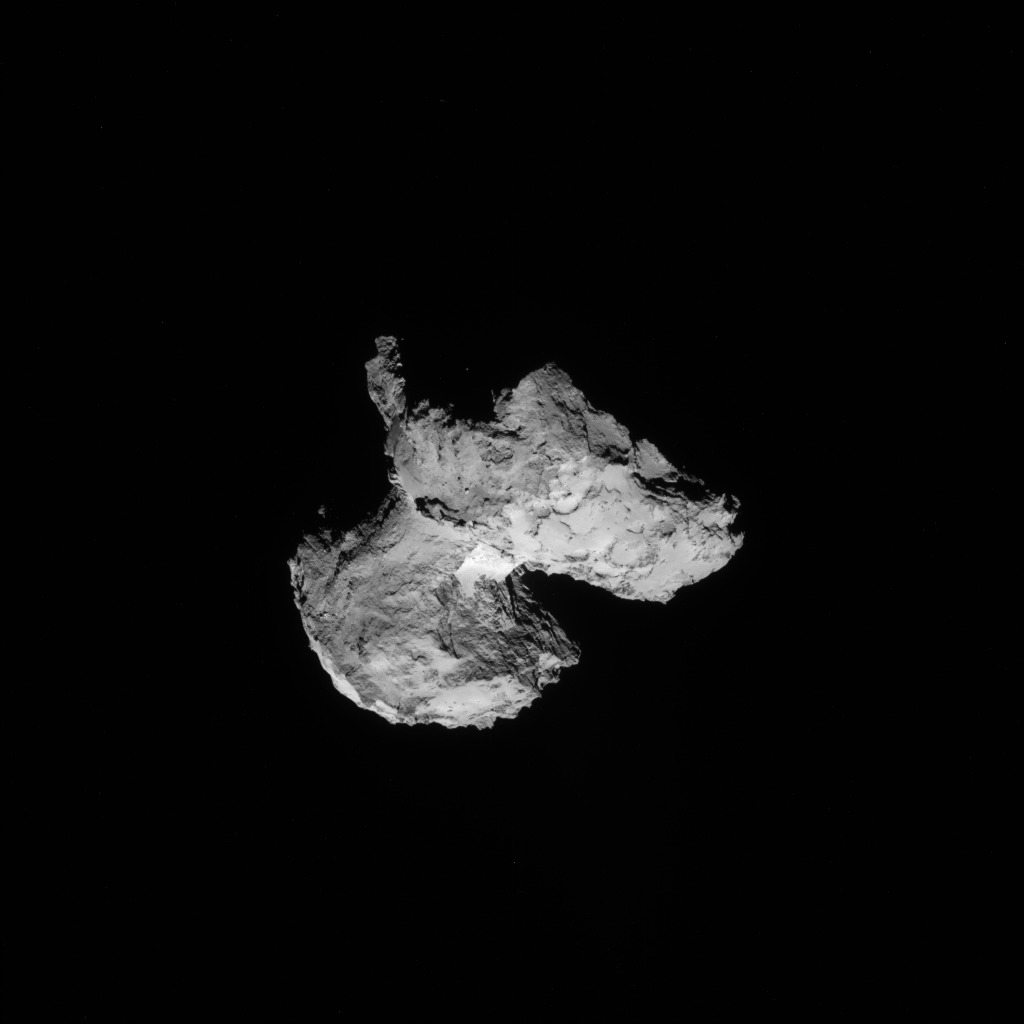New Images of Comet Churyumov-Gerasimenko

Prior to the landing of the Philae probe on the surface of comet P76, it will be necessary to wait several more months (the landing will take place only on November 14 of this year). But now scientists have received quite a lot of data about the comet, and such data that cannot be obtained without the Rosetta station.
In particular, scientists already know that the cometary nucleus consists of two parts, and it is not yet clear that they are stuck together nuclei of two different comets, or a deformed nucleus of one comet. The surface of the "halves" is different. If the "head" of a comet is covered with linear parallel formations similar to cliffs, then the "body" of a comet has an uneven surface, with "valleys" and "peaks".
')
In addition, it turned out that the comet is warmer than astronomers had expected, the surface temperature of the comet is -70 degrees Celsius. It seems that the nucleus of the comet is covered with dark dust, which is the cause of the increased temperature.
Well, now Rosetta literally every day sends new photos of the surface of the object of its research:

Photo of August 16 (93.5 km from the comet)

Photo of August 15 (91 km from the comet)

Photo of August 14 (100 km)

Stereo image, photograph "isthmus"

13 Vgusta, 115 km from the comet

12 August, 103 km
Every day, the 11 scientific instruments of the Rosetta station add new data to the general “boiler” of information. However, maximum results in studying the comet can be achieved only after the landing of the Philae probe. We are waiting for November, although before this date, astronomers will be able to surprise us more than once.
Via esa
Source: https://habr.com/ru/post/233599/
All Articles